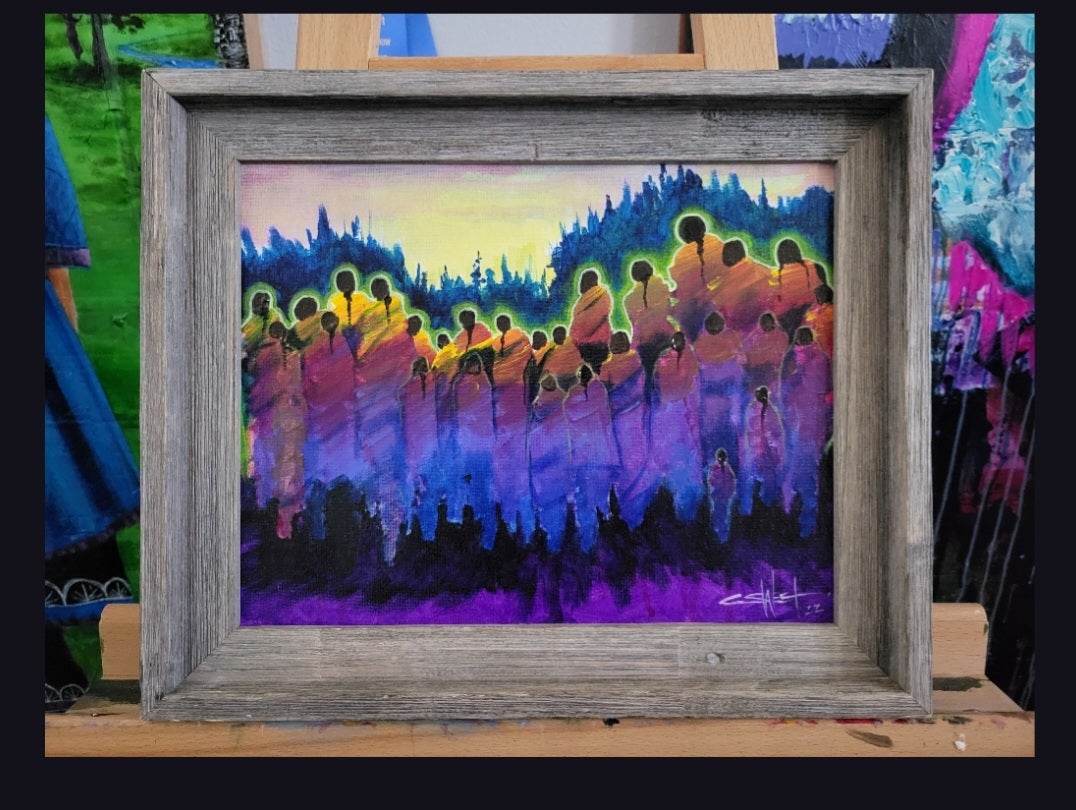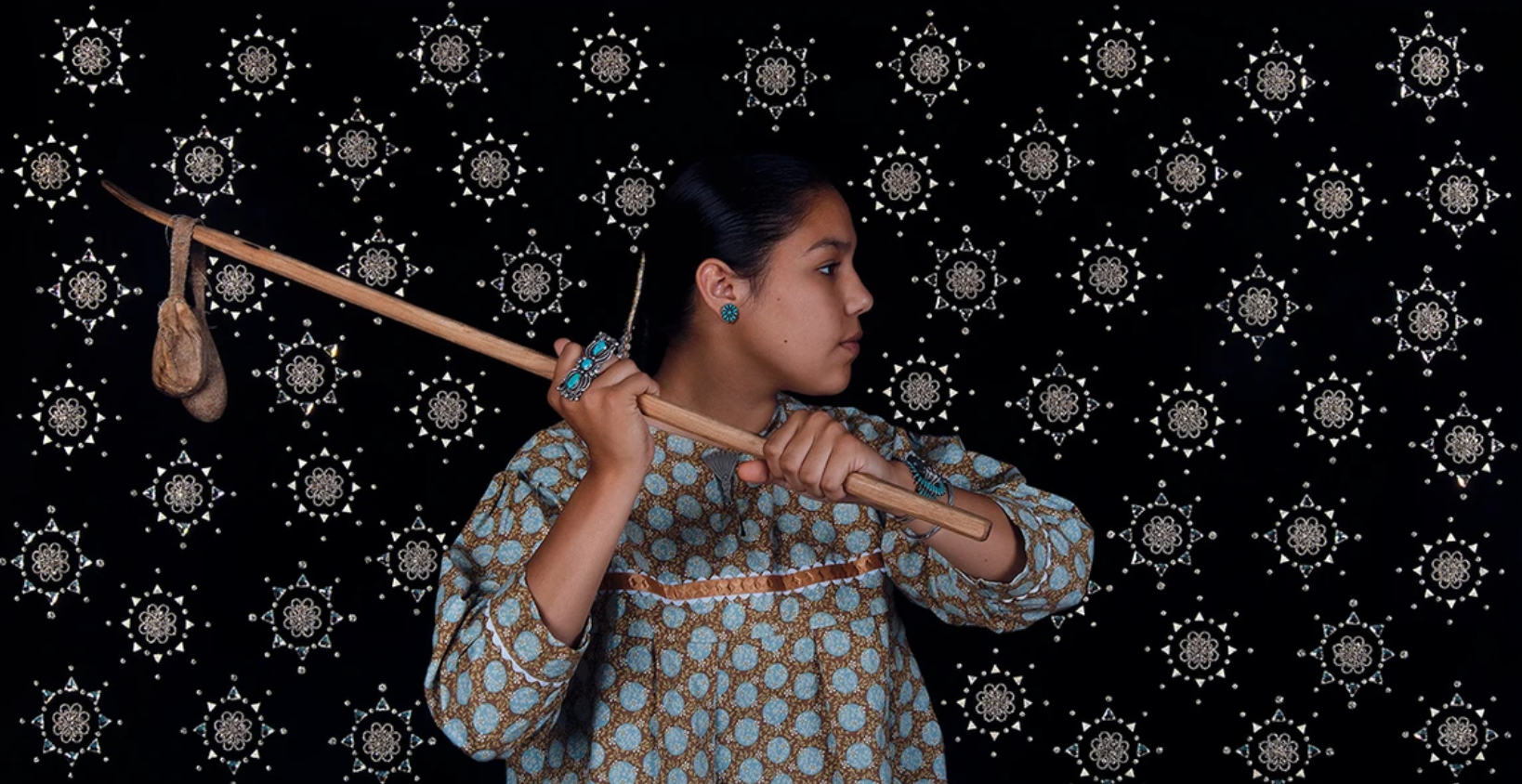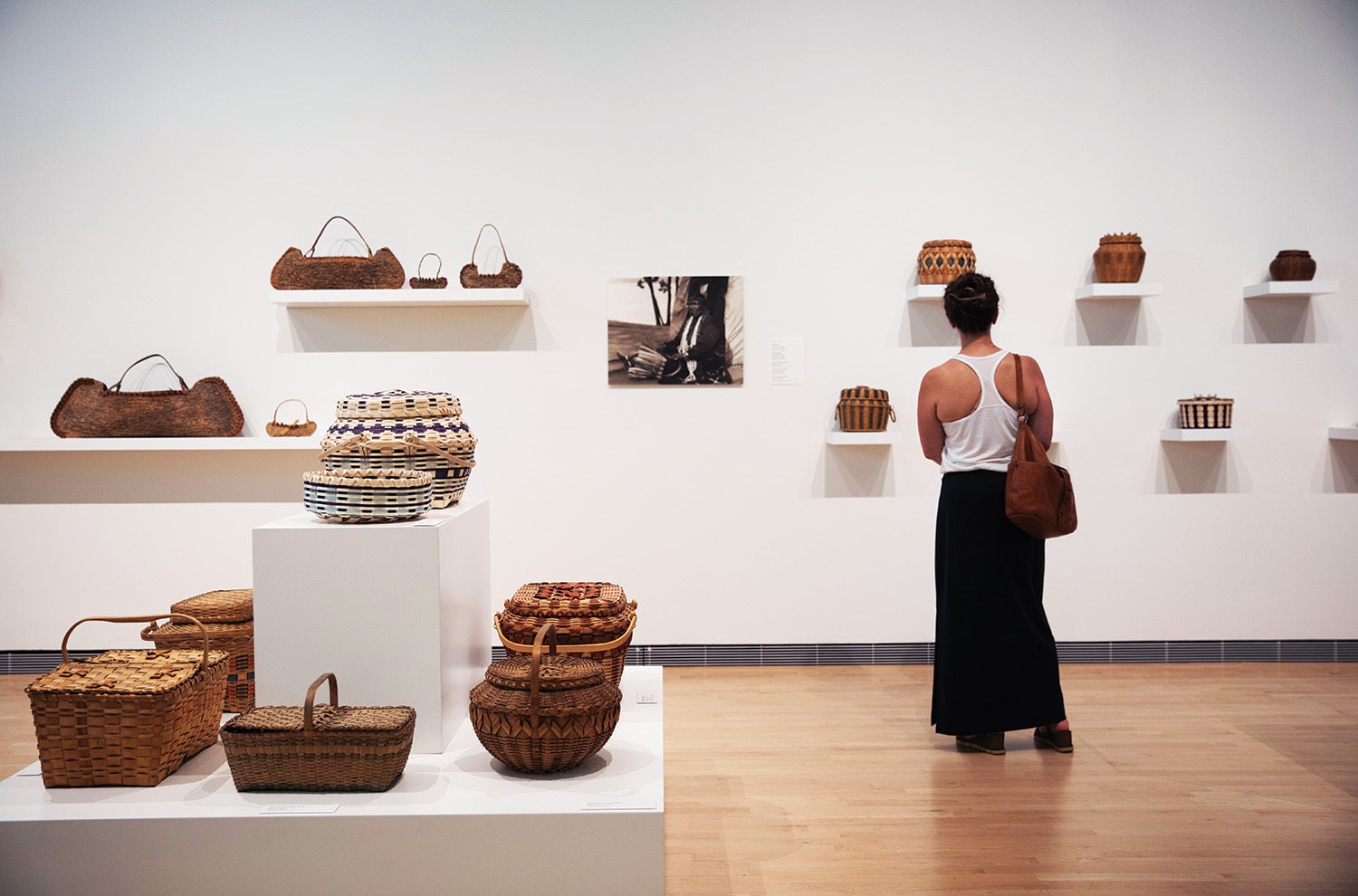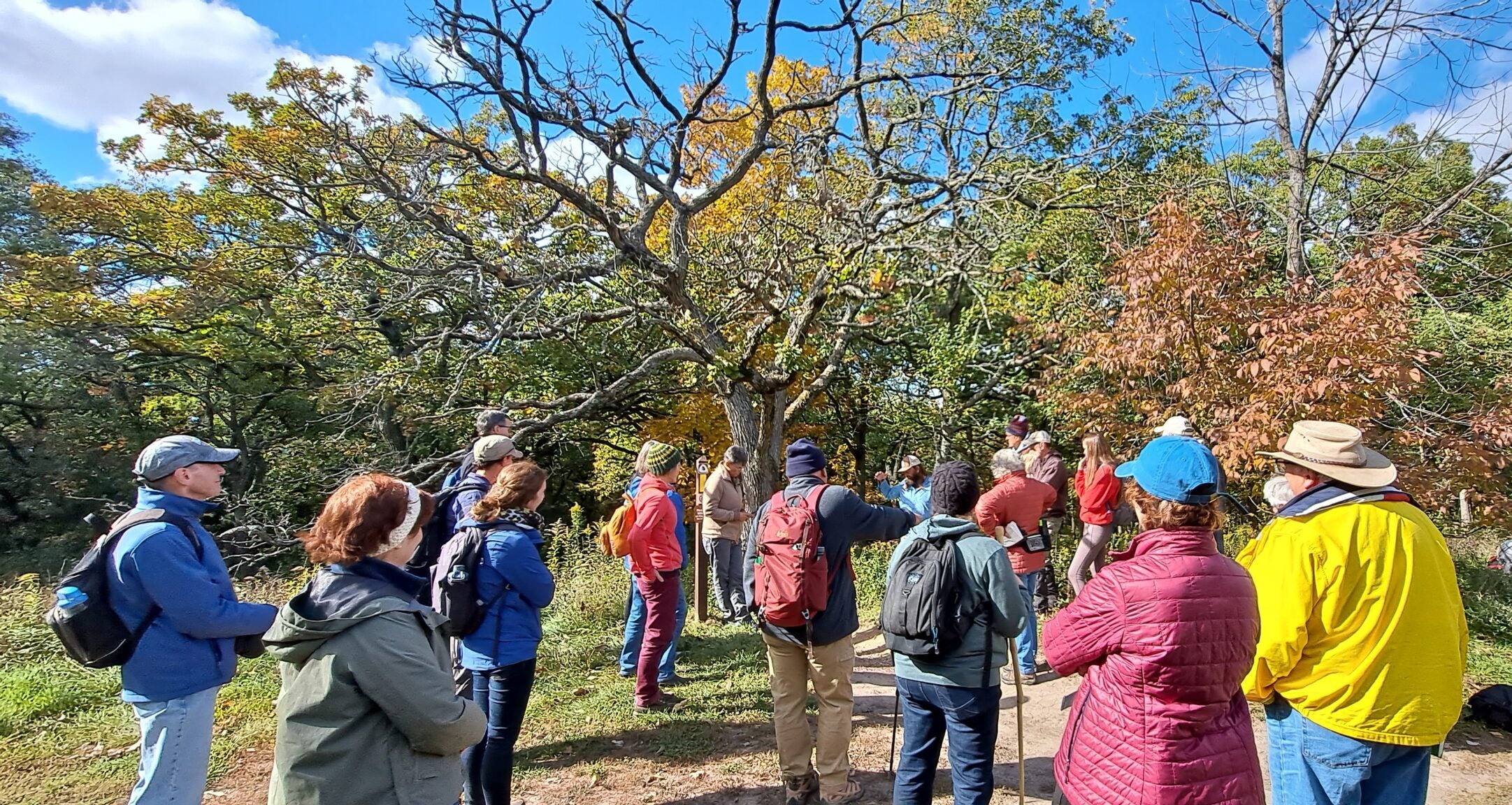Native Americans have lived in Wisconsin for thousands of years, but for curator Michaela Salas, it’s not only the history that matters.
“We’re still here” has become a proud refrain for many Native people, including Salas, who is seeking to showcase the vibrancy of contemporary tribal culture through a new art show at Madison College.
“When people think of Native people, they often think of only our pain and suffering,” she said. “I wanted to highlight the strength and the resilience of our people and the perseverance. … We’ve held our ground, and we’ve resisted, and we’re still here. I want to celebrate that.”
Stay informed on the latest news
Sign up for WPR’s email newsletter.
“Indigenous Wisconsin: A Story of Resistance” features works by 18 Native artists from around the state, representing 11 of the 12 tribal nations in Wisconsin. It’s part of the college’s Native American Heritage Month programming.
Salas is the tribal liaison for Madison College and a member of the Bad River Band of Lake Superior Chippewa. She curated the exhibit with Katie Ackley and Nicole Soulier, two of her colleagues who are also Bad River members.
Salas told WPR that this “small but mighty” team chose the theme “A Story of Resistance” to emphasize both historical and present-day aspects of Native American culture and artistry.
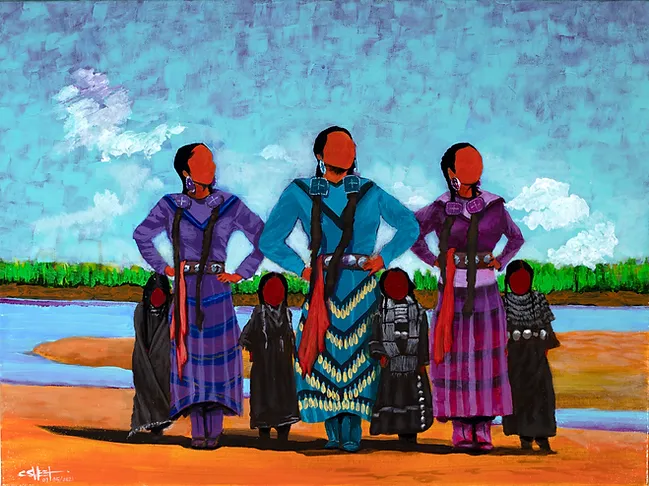
The artwork featured in the exhibit ranges from classic forms like sculpture and painting to modern mediums of photography and digital art. There are also several traditional Native pieces on display, including a cradleboard, beaded bandolier bags and moccasins.
For Salas, it represents a broader shift in museum practice to display these Native handicrafts, which are often found in historical museums, in an art-gallery setting.
“These [objects] are often seen as historical pieces, but they’re really contemporary art as well to the Native community,” she said. “I love that as Native people, we’re reclaiming those. They’ve always been art, but now they’re being seen that way, and not just as historical artifacts.”
WPR spoke with three of the contributing artists to learn about their artwork and what inspires them.
Traditional cradleboard highlights Native craft and artistry
Last year, Ho-Chunk artist Josie Lee was looking around for a local artisan to make a cradleboard for a friend who was expecting a baby. For generations, Native Americans throughout the region have used cradleboards as a hands-free way to securely carry babies while working or traveling.
The cradleboard’s frame is typically wooden or woven, with a bow near the top to protect the baby’s head from lurching forward, and a footrest. To keep the baby comfortable and warm, women would often wrap a soft cloth around the baby’s body in the cradleboard.
“It was a way for babies to view the world while also still feeling embraced within that cradle,” Lee said.
After failing to find someone who could make a cradleboard, Lee learned how to make them and she’s been doing it ever since.
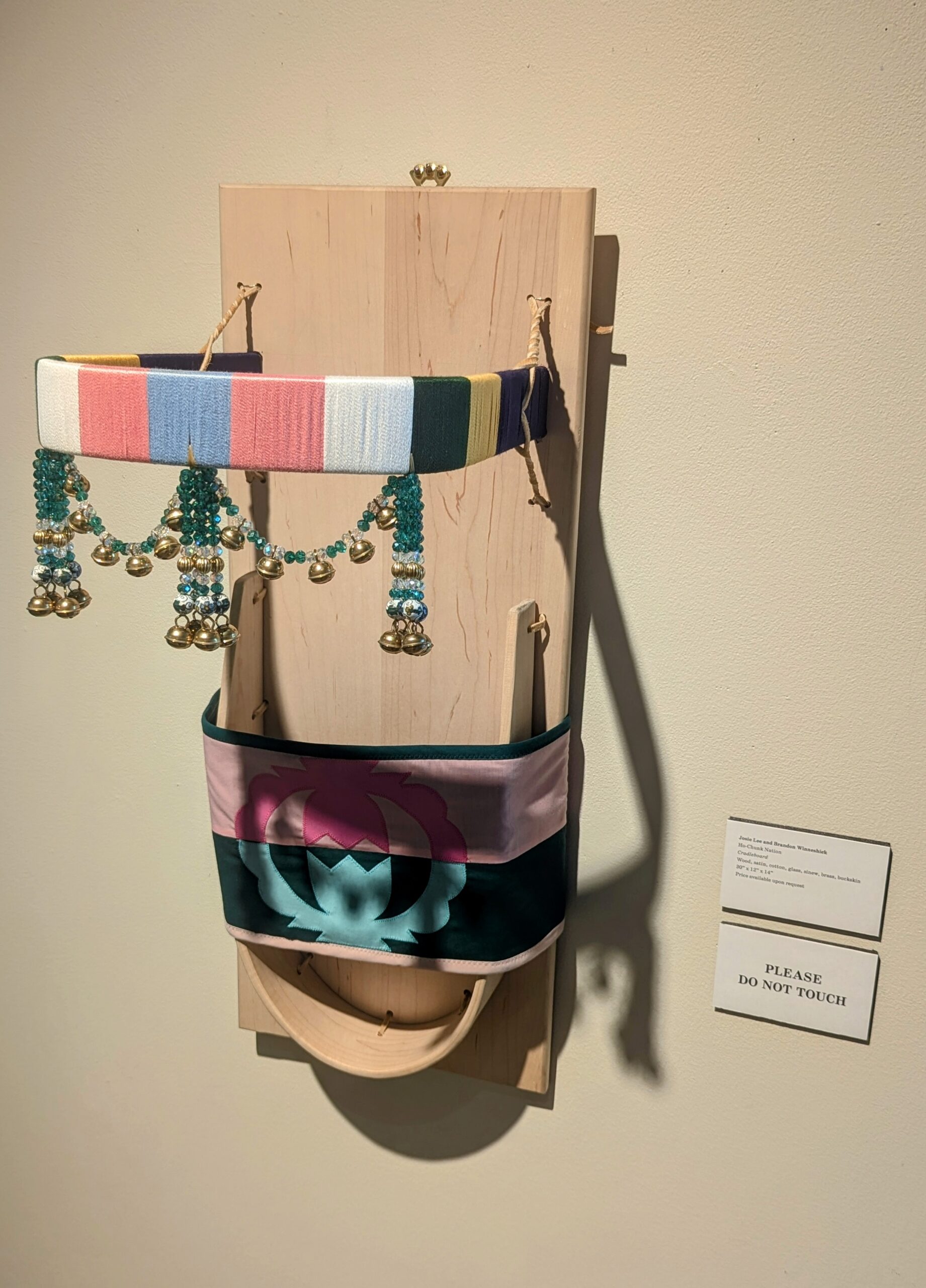
Lee grew up in Tomah and learned to weave when she was 17. She said that she focuses on “traditional-based artwork — things that aren’t meant for art galleries but are used within our community.”
Now, Lee is the director of the Ho-Chunk Nation Museum and Cultural Center in her hometown. For the “Story of Resistance” exhibit, she designed and created a cradleboard with her husband, Brandon Winneshiek, and their two children.
“Family ties to creating — to practicing and passing on traditional practices — were really destroyed and targeted by colonization,” Lee said. “To me, it’s really important to have my children be a part of the creation process. Because it means that we are continuing to teach and continuing to pass on the knowledge that we have.”
Documenting living Native culture through photography
Clarissa Friday, a photographer and member of the Forest County Potawatomi Community, said her mom used to be the one to take family pictures. After having her first child, Friday decided she wanted to continue the tradition of documenting the family as her children grew up.
Ten years ago, a local news outlet highlighted a photo she took of her two children.
“I loved the image, but I was like, ‘I don’t know how I created it,’” she said. “I wanted to be able to create that image on purpose, so I decided that I wanted to go to school and figure out how to do that.”
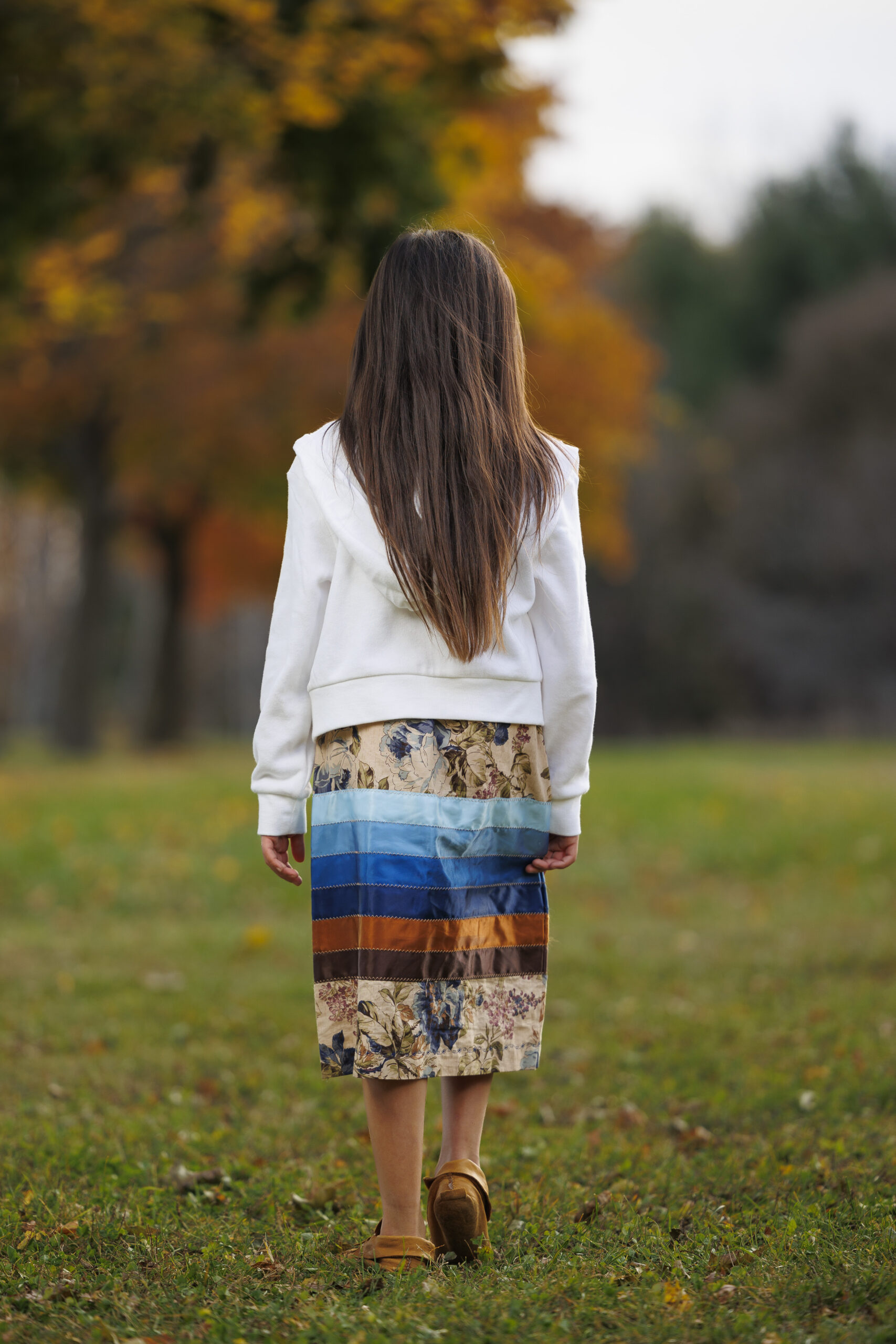
Friday, who now lives in West Bend, completed a photography program at Milwaukee Area Technical College and started Native Clarity, a business that specializes in portraits and maternity sessions.
Along the way, she has been documenting Native American cultures around Wisconsin.
“Going to powwows, I found that that was a great space for me to explore and be able to practice my photography,” Friday said. “I also found that that’s where I got to document my culture and where I came from, and be around and bring my children around our people and reconnect.”
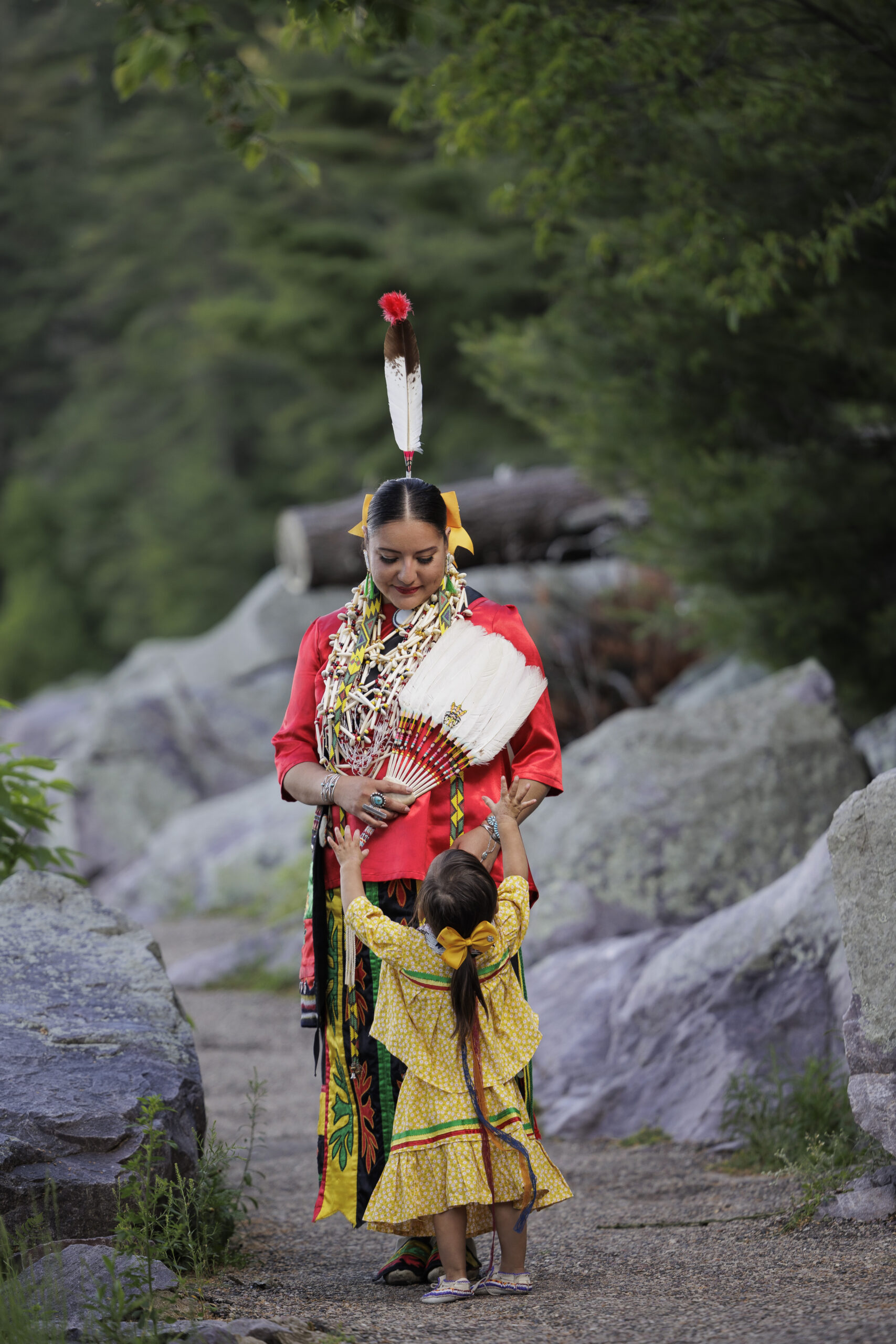
Friday said she hopes the exhibit inspires visitors to not only learn more about Native American culture in the state, but to build new connections and relationships.
“I hope it brings curiosity to want to learn more, to want to reach out, to understand and be aware that Native Americans are still here … and living our lives and living our culture,” she said.
A Ho-Chunk painter gets inspiration from his ancestors
Painter Christopher Sweet said he has always taken inspiration from the Wisconsin River, where he and his ancestors have lived for many generations, and from Native cultural events like powwows.
“It’s just a really beautiful gathering. I get a lot of my inspiration from that, and the stories that were shared, that I’ve heard from my relatives,” he said. “Some of those stories, they touch you throughout life, and I just want to express those. And that’s what I do — put it out there in my artwork.”
Sweet, who is Ho-Chunk and White Earth Ojibwe, is the featured artist of the “Story of Resistance” exhibit. He lives on a conservation easement near the Dells and is the owner and operator of Blue Bear Studio in Baraboo.
Sweet said he’s been interested in art since he was a kid sketching in notebooks or creating a mural for his grade school. As an adult, he attended the Institute for American Indian Arts in Santa Fe, New Mexico, but he considers himself a mostly self-taught artist.
Most of Sweet’s artwork depicts Native American people and culture in bright, vivid colors. Earlier this year, he did live painting demonstrations at the Harry Whitehorse International Wood Sculpture Festival in Monona, where he painted an image of “Ho-Chunk ancestors standing along the shoreline, looking across the lake and welcoming a new day.”
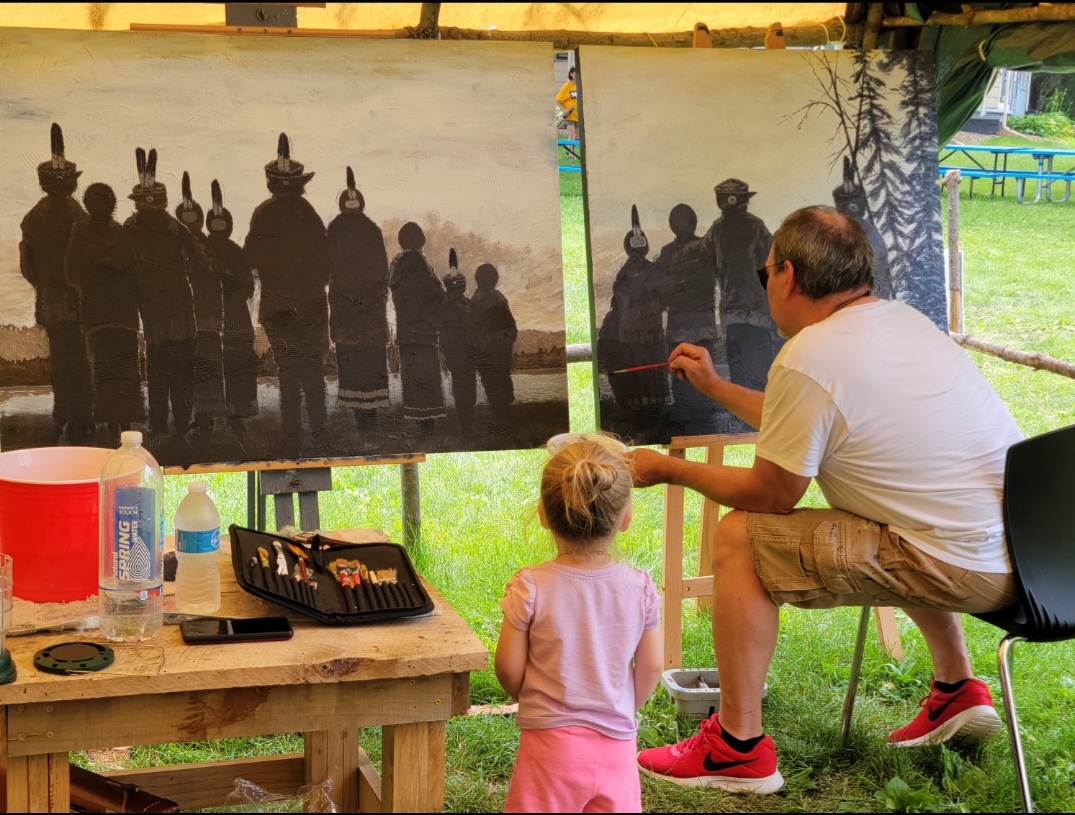
In addition to providing inspiration, Sweet’s heritage informs his artistic process. He sometimes burns sage, which is considered a sacred practice in Ho-Chunk culture, and uses the ash in the design of a piece.
“And so the canvas almost has a blessing before I even add paint to it. It has a good feeling in it,” he said. “I also speak to my ancestors and ask them to guide my hand when I’m treating something. And I really feel like that comes out in my work.”
Sweet’s featured painting in the “Story of Resistance” exhibit is called “Reflections of Healing” and was inspired by the disproportionate impacts of the COVID-19 pandemic on Native American communities.
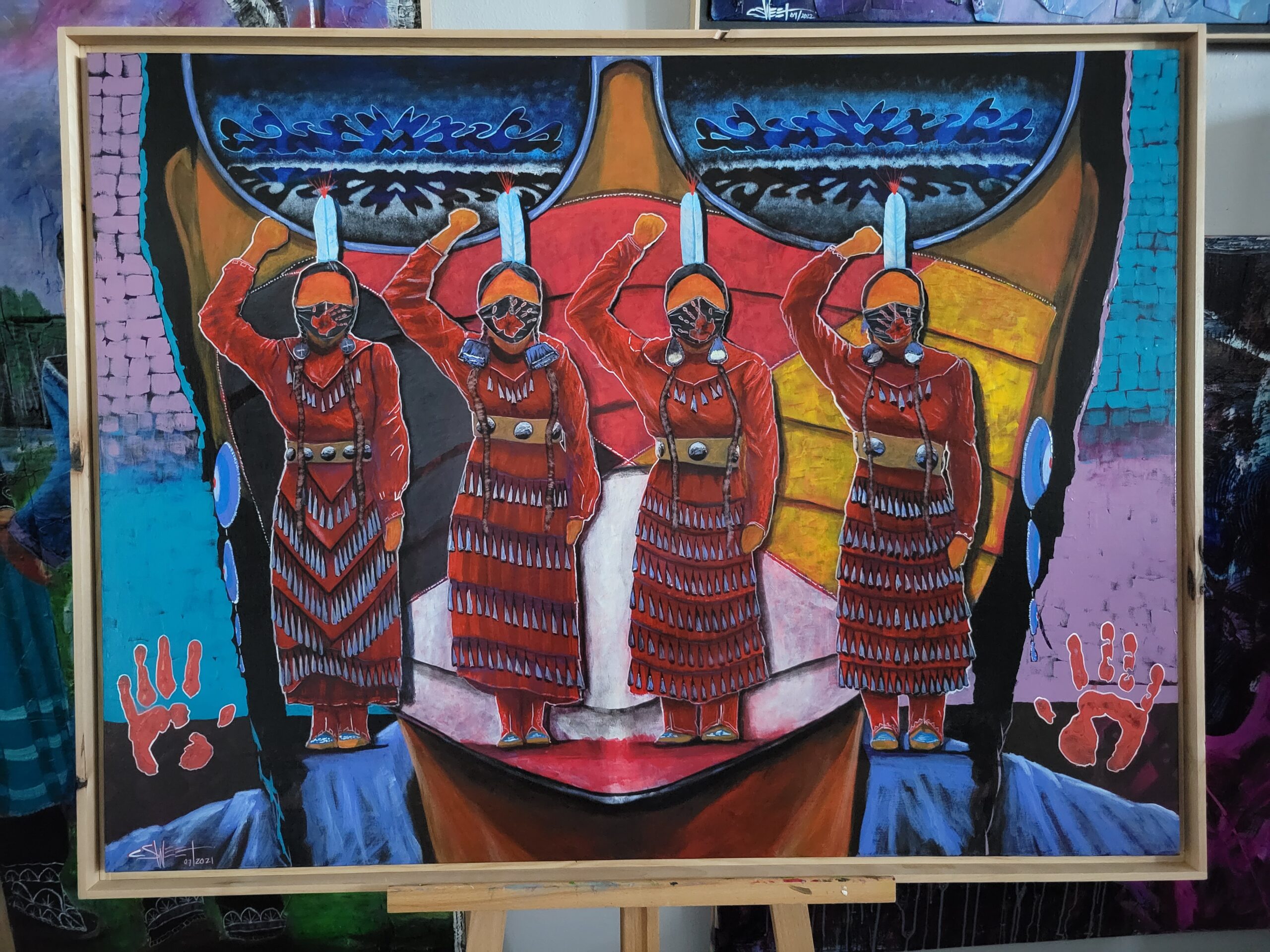
“Another thing that I like to focus on in my artwork is healing. We’ve been needing a lot of that, and we’re definitely going to need more unity and more healing in our futures,” he said. “So I hope that people can come away with that in their hearts.”
“Indigenous Wisconsin: A Story of Resistance” is open to the public through Dec. 6 at the Art Gallery at the Truax Building Room at 1701 Wright St., Madison.
